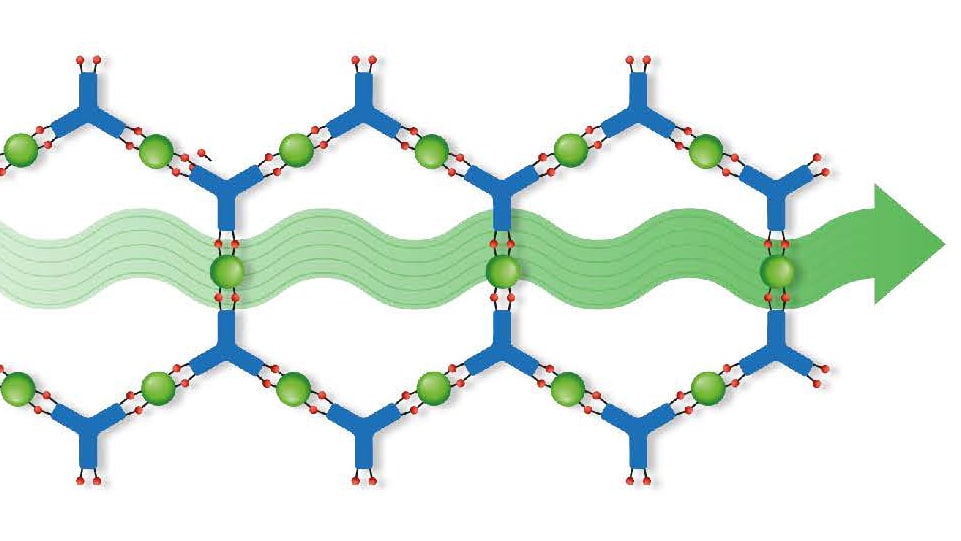Researchers at KIT have recently achieved something once thought impossible: they have made a metal-organic framework (MOF) conduct electricity like a metal. And not just in theory — in a real, usable thin film.
This game-changing development could lead to a range of applications, from flexible electronics to ultra-efficient energy storage systems. In short, MOFs — once known only for their high porosity and use in gas separation — are now entering the race for the future of electronics.
What are MOFs?
MOFs are materials made of metal ions linked by organic molecules, forming complex, sponge-like structures. They’ve been hailed for their ability to trap gases, clean pollutants, and help in catalysis. However, one significant flaw has always held them back from more ambitious uses: they don’t conduct electricity well, until now.
From Insulators to Conductors: A Metallic Breakthrough
Researchers from Germany’s Karlsruhe Institute of Technology (KIT) and their international partners just fabricated a metal-organic thin film that conducts electricity like metal — a first in scientific history.
Their secret weapon? A robot-run, AI-powered self-driving lab that fine-tuned the material at atomic precision, minimizing structural defects that used to block electric flow.
The result: a thin film of Cu₃(HHTP)₂ MOF that reaches over 200 Siemens per meter in conductivity at room temperature — and even more when cooled. That’s no longer “good for a MOF” — that’s full-on metallic behavior.
From Theory to Real-World Tech
This new MOF doesn’t just conduct—it behaves like a high-end quantum material.
Inside its atomic lattice, researchers discovered Dirac cones—electronic states also observed in graphene, renowned for its swift electron movement.
That means these MOF films could be used to explore next-gen effects like:
- Spin liquids (exotic quantum states)
- Klein tunneling (where particles move through barriers as if they weren’t even there)
In other words, this is not just a better wire — it’s a potential launchpad for quantum computing, energy storage, and smart sensors that adapt and respond like living systems.
AI Chemistry Meets Human Ambition
What’s even more fascinating is how this leap happened. Instead of mixing chemicals by hand, the team utilized automated, AI-driven synthesis to repeatedly tweak the material’s structure until they found the optimal configuration.
Think of it like the ChatGPT of chemistry — but for building materials atom by atom.
The Road Ahead: Electronics Beyond Silicon
This discovery could lead to a new generation of electronics where components are:
- Thinner and more flexible
- Tuned for specific functions (like sensing gases or harvesting energy)
- Capable of quantum-level control at room temperature
It’s the kind of material leap that might one day replace rigid, energy-hungry silicon components with smart, programmable lattices that adapt to their environment.
The Rise of Designer Matter
This breakthrough in conductive MOFs shows that we’re entering an era where materials can be designed like software—customized for performance, efficiency, and adaptability.
From semiconductors to wearables to ultra-efficient batteries, one thing is clear: the future of electronics may not be etched in silicon anymore—it could be grown from frameworks like this.


